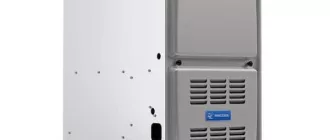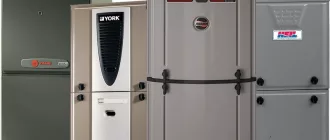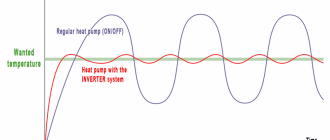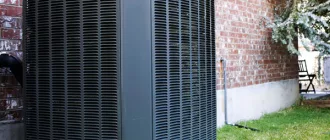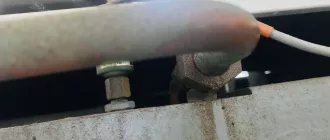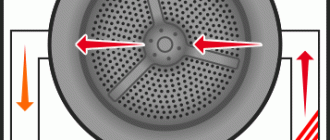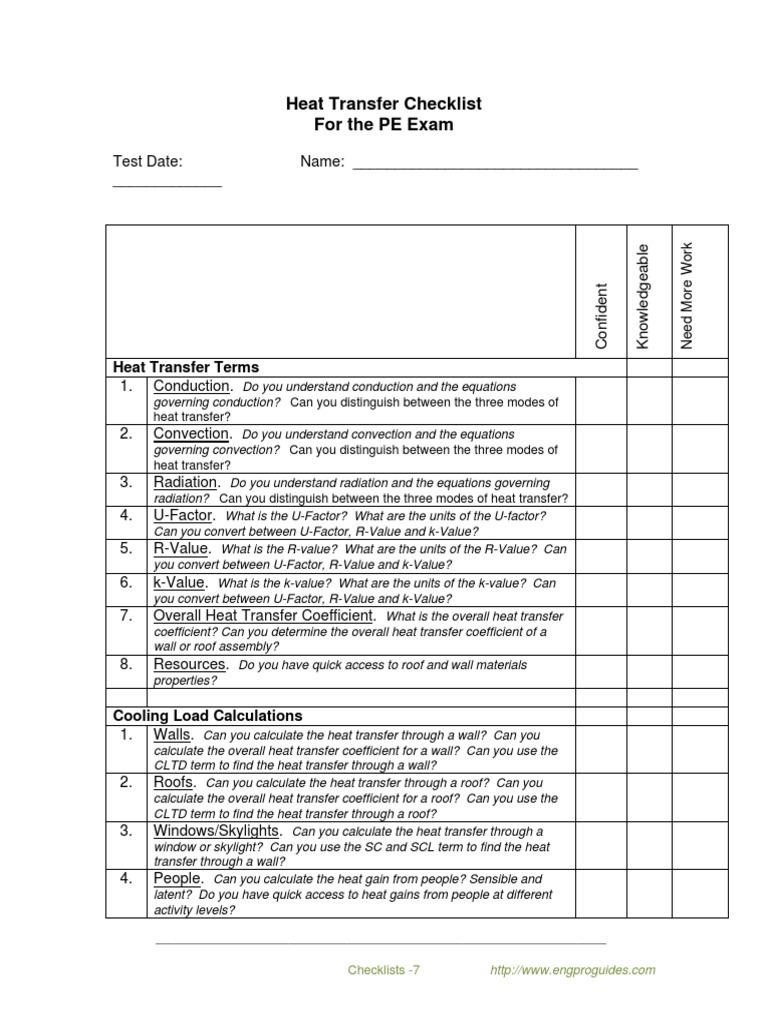
Central Heating System Quick Maintenance Checklist
In order to keep your central heating system running smoothly and efficiently, regular maintenance is essential. By following a quick checklist of essential steps, you can ensure that your system operates at its best and avoids costly repairs or breakdowns. With a few simple tasks, you can extend the lifespan of your heating system and keep your home warm and comfortable throughout the year.
1. Clean or Replace Filters: One of the most important maintenance tasks for your central heating system is cleaning or replacing the filters regularly. Filters help to keep the air circulating freely, and clogged filters can put stress on your system and reduce its efficiency. By cleaning or changing filters every few months, you can improve the air quality in your home and prevent costly damage to the system.
2. Check and Adjust Thermostat Settings: Another key step in maintaining your heating system is to regularly check and adjust the thermostat settings. Make sure that the temperature is set to a comfortable level and that the system is operating as expected. If you notice any issues or fluctuations in temperature, it may be necessary to calibrate or replace the thermostat.
3. Inspect and Clean Air Vents: Proper airflow is crucial for an efficient central heating system. Regularly inspect and clean the air vents throughout your home to ensure that they are not blocked or obstructed by furniture, curtains, or dust. This will help to evenly distribute heat and prevent any unnecessary strain on the system.
4. Schedule Professional Inspections: While you can perform these quick maintenance tasks on your own, it is also recommended to schedule regular inspections with a professional heating technician. They can thoroughly inspect your system, identify any potential issues, and perform necessary maintenance or repairs to keep your central heating system running smoothly.
By following this quick maintenance checklist, you can ensure that your central heating system operates efficiently and reliably all year round. Proper care and attention can save you money on energy bills, avoid costly repairs, and extend the lifespan of your heating system.
Central Heating System Maintenance Checklist:
- Inspect the heating system for any visible damage or leaks.
- Clean or replace the air filters regularly to ensure optimum performance.
- Check and adjust the thermostat settings as needed.
- Ensure that all heating vents are clear and unobstructed.
- Inspect the pipes and fittings for any signs of leakage or corrosion.
- Flush the system to remove any debris or sediment.
- Check and maintain the water pressure in the heating system.
- Inspect and clean the burner and combustion chamber.
- Check the operation of the safety controls and shut-off valves.
- Verify that all electrical connections are secure and functioning properly.
- Test the ignition system and clean or replace the igniter as needed.
- Inspect and clean the heat exchanger and flue system.
- Check and adjust the fuel or gas supply as needed.
- Verify that all pumps, motors, and fans are operating correctly.
By following this central heating system maintenance checklist, you can ensure that your system is running efficiently and effectively, providing you with reliable heating throughout the year.
Importance of Regular Maintenance
Regular maintenance of your central heating system is essential to ensure its proper functioning and longevity. By following a quick maintenance checklist, you can identify and address any potential issues before they become significant problems.
- Prevention of breakdowns: Regular maintenance helps prevent unexpected breakdowns by identifying and addressing minor issues before they escalate. This saves you from the inconvenience and expense of having to repair or replace your central heating system.
- Increased energy efficiency: A well-maintained central heating system operates more efficiently, resulting in lower energy consumption and utility bills. By regularly cleaning and servicing your system, you can ensure that it is performing optimally.
- Improved indoor air quality: A neglected central heating system can accumulate dust, dirt, and other allergens, which can reduce the air quality in your home. Regular maintenance includes cleaning and replacing filters, which helps maintain a healthy and comfortable living environment.
- Extended lifespan of the system: Proper maintenance can extend the lifespan of your central heating system. By addressing any issues early on and ensuring that all components are functioning correctly, you can avoid premature wear and tear and prolong the life of your system.
- Peace of mind: Knowing that your central heating system is regularly maintained provides peace of mind. You can rest assured that your system will continue to provide reliable heat and comfort for your home, especially during the colder months.
In conclusion, regular maintenance of your central heating system is crucial for its proper care and performance. By following a simple checklist and conducting routine servicing, you can maximize energy efficiency, prevent breakdowns, and ensure a comfortable living environment.
Understanding Your Heating System
When it comes to central heating systems, it’s important to have a good understanding of how they work and what you need to do to maintain them properly. This quick maintenance checklist will help you take the necessary steps to keep your system running efficiently.
First, let’s talk about the different components of a heating system. The main components include the boiler, radiators or baseboard heaters, thermostat, and the various pipes and valves that connect everything together.
The boiler is the heart of the heating system and is responsible for heating the water that circulates throughout the system. The radiators or baseboard heaters in each room then use this hot water to distribute heat to the space. The thermostat allows you to control the temperature and set the desired level of warmth.
Now, onto the maintenance checklist. Regular maintenance is essential to keep your system running properly. Here are a few key steps:
| 1 | Check the boiler pressure. |
| 2 | Bleed the radiators. |
| 3 | Inspect the pipes and valves for any leaks or damage. |
| 4 | Clean or replace the air filters. |
| 5 | Inspect and clean the thermostat. |
| 6 | Check the overall system for any signs of wear or malfunction. |
By following this checklist regularly, you can ensure that your central heating system is performing optimally and avoid any potential problems. Remember, proper care and maintenance will extend the lifespan of your system and save you money in the long run.
Checking and Replacing Filters
One of the essential steps in the central heating system quick maintenance checklist is checking and replacing filters. Filters play a crucial role in ensuring the proper functioning and efficiency of your heating system.
Regularly checking and replacing filters is important for several reasons. First, filters prevent the accumulation of dirt, dust, and other pollutants in the system. These particles can clog the system and reduce its overall performance. By regularly checking and replacing filters, you can ensure the system functions optimally and provides clean, healthy air.
Second, dirty filters can also lead to higher energy consumption. When the filters are clogged, the system needs to work harder to push the air through, resulting in increased energy usage and higher heating bills. By regularly checking and replacing filters, you can improve the system’s energy efficiency and reduce your energy costs.
To check and replace filters, follow these steps:
1. Turn off the central heating system: Before checking or replacing filters, it’s important to turn off the heating system to prevent any accidents or injuries.
2. Locate the filters: Filters are typically located near the air intake vent or the furnace. Refer to your system’s manual or consult a professional if you’re unsure about the filter’s location.
3. Remove the old filter: Once you’ve located the filter, carefully remove it from its housing. Pay attention to how the filter is installed so you can replace it correctly.
4. Inspect the old filter: Take a moment to inspect the old filter for any signs of dirt, dust, or damage. If the filter is dirty or damaged, it’s time to replace it.
5. Install a new filter: Insert a new filter into the housing, making sure it’s positioned correctly. Follow the manufacturer’s instructions for proper installation.
6. Turn on the central heating system: Once the new filter is installed, turn on the central heating system and ensure it’s functioning properly. Check for any unusual sounds or issues and contact a professional if needed.
Remember, filters should be checked and replaced regularly, ideally every few months or as recommended by the manufacturer. By staying proactive with filter maintenance, you can ensure the longevity and efficiency of your central heating system.
Inspecting and Cleaning Vents and Ducts
As part of your central heating system maintenance checklist, it is essential to inspect and clean the vents and ducts regularly. Vents and ducts play a crucial role in distributing the heated air throughout your home, so keeping them clean is important for proper functioning.
Here are the steps you need to follow:
- Start by visually inspecting the vents and ducts for any signs of dirt, dust, or debris. Look for any blockages or obstructions that may hinder the flow of air.
- Use a flashlight to get a better view inside the vents and ducts. Check for any mold growth, vermin infestation, or other signs of damage.
- If you spot any visible dirt or dust, use a vacuum cleaner with a brush attachment to remove them. Be gentle to avoid damaging the vents or ducts.
- For deeper cleaning, consider using a specialized cleaning solution or hire a professional duct cleaning service. They have the equipment and expertise to thoroughly clean the vents and ducts.
- While cleaning, make sure to also check the dampers and louvers. Ensure they are functioning properly and not obstructed.
- Finally, don’t forget to replace the air filters regularly. Clogged filters can lead to reduced airflow and decreased efficiency of your central heating system.
By inspecting and cleaning the vents and ducts of your central heating system, you can ensure the proper airflow and optimal performance of your heating system. Regular maintenance will also help prevent potential issues and prolong the lifespan of your system.
Testing Thermostat Functionality
As part of your central heating system’s quick maintenance checklist, it is important to test the functionality of your thermostat. The thermostat is responsible for controlling the temperature of your home and ensuring that your heating system is working efficiently. Here are some essential steps to follow when testing your thermostat:
- Turn off the power: Before performing any tests, make sure to turn off the power to your central heating system. This can usually be done by flipping the appropriate switch in your electrical panel.
- Set the temperature: Set the thermostat to a temperature that is different from the current room temperature. This will activate the heating system and allow you to see if it is working properly.
- Observe the system: Once you have set the temperature, observe the central heating system to see if it turns on. You should hear the sound of the system kicking in and feel warm air coming out of the vents in your home.
- Check for accurate temperature reading: Use a separate thermometer to check the accuracy of the temperature reading on your thermostat. If there is a significant difference, it may indicate a problem with the thermostat’s sensor.
- Test the thermostat controls: Test all the controls on your thermostat, including adjusting the temperature, switching between heating and cooling modes, and setting the fan to auto or on. Make sure each control is functioning properly.
- Replace batteries if necessary: If your thermostat is battery-powered, check if the batteries need to be replaced. Weak batteries can affect the thermostat’s performance.
- Repeat the process: After completing the tests, repeat the process by setting the temperature to a different setting and observing the system again. This will help ensure that your thermostat is consistently functioning correctly.
By regularly testing the functionality of your thermostat, you can identify any issues early on and address them promptly. This will help keep your central heating system running efficiently and ensure that your home remains comfortable throughout the year.
Flushing the System
Flushing the central heating system is an essential part of regular maintenance to ensure its efficient operation. Over time, sludge and debris can accumulate in the system, causing blockages and reducing heat circulation. Flushing the system helps remove these contaminants and improve the overall performance of the system.
To perform a quick flushing of the central heating system, follow these steps:
- Turn off the boiler: Before starting the flushing process, make sure to turn off the boiler to avoid any accidents.
- Open the valves: Locate the drain valve and the vent valves on the radiators. Open these valves to allow water to flow out of the system.
- Attach a hose: Connect a hose to the drain valve and place the other end in a suitable drain or outside area where the water can safely flow out.
- Flush the system: Turn on the tap water supply and let water flow through the system for a few minutes. This will help dislodge any trapped sludge or debris.
- Close the valves: Once the water appears clear and free from any contaminants, close the drain valve and vent valves.
- Refill the system: Turn on the boiler and slowly refill the system with fresh water. This will help repressurize the system.
- Bleed the radiators: Finally, bleed the radiators to remove any trapped air and ensure optimum heat distribution.
Performing a regular flushing of the central heating system is recommended at least once a year or as needed. This simple maintenance step can help prolong the lifespan of the system and keep it running efficiently.
Bleeding Radiators
One important step in the central heating system maintenance checklist is bleeding the radiators. This quick and simple task helps ensure the efficient operation of the heating system.
Over time, air can accumulate in the radiators, leading to cold spots and reduced heat output. Bleeding the radiators removes trapped air, allowing hot water to flow freely and evenly. This helps to maximize the effectiveness of the heating system.
To bleed a radiator, follow these steps:
| Step 1: | Turn off the heating system and allow the radiators to cool down. |
| Step 2: | Locate the bleed valve on the radiator. It is usually located at the top or side of the radiator. |
| Step 3: | Place a towel or container underneath the bleed valve to catch any water that may escape. |
| Step 4: | Using a radiator key or a flat-blade screwdriver, slowly turn the bleed valve counterclockwise. You may hear a hissing sound as the trapped air escapes. |
| Step 5: | Once water starts to come out of the bleed valve, tighten it back up in a clockwise direction. |
| Step 6: | Repeat this process for all the radiators in your home. |
| Step 7: | Finally, turn on the heating system and check if the radiators are now heating up evenly. |
Bleeding the radiators should be done regularly as part of the central heating system maintenance routine. It is recommended to perform this task at least once a year or when you notice cold spots on the radiators.
By including bleeding radiators in your maintenance checklist, you can help ensure the optimal performance and longevity of your heating system.
Checking for Leaks
Regular maintenance is crucial for ensuring the proper functioning of a central heating system. One important step in the quick maintenance checklist is checking for leaks.
Leaks can cause significant damage to a heating system if not detected and fixed promptly. The first thing to do is visually inspect all the components of your central heating system, including pipes, radiators, and valves. Look for any signs of water dripping or pooling around these areas.
In addition to visual inspection, it’s also important to check for any unusual sounds, such as hissing or gurgling, which could indicate a hidden leak. If you notice any suspicious sounds, it’s recommended to contact a professional plumber or heating engineer to further investigate the issue.
If you do find any leaks, it’s important to take immediate action. Depending on the severity of the leak, you may be able to fix it yourself using tape or sealant. However, for more serious leaks or if you’re unsure how to fix it properly, it’s best to contact a professional.
Regularly checking for leaks and addressing them promptly can prevent further damage to your central heating system and ensure it continues to operate efficiently. This simple step should be included in your regular maintenance routine and can save you time and money in the long run.
Inspecting and Cleaning the Boiler
Maintenance of the central heating system involves inspecting and cleaning the boiler. The boiler is a crucial component of the heating system and requires regular attention to ensure its proper functioning.
Start by visually inspecting the boiler for any signs of damage or leaks. Check the pressure gauge and ensure that it is within the recommended range. If the pressure is too high or too low, adjust it accordingly.
Next, inspect the boiler’s flue or chimney. Make sure it is clear of any obstruction such as debris or bird nests. Any blockage can affect the efficiency of the boiler and potentially lead to carbon monoxide build-up.
Cleaning the boiler is an essential step in its maintenance. Start by turning off the power supply and allowing the boiler to cool down. Use a soft brush to remove any dust or debris from the boiler’s surfaces. Pay special attention to the combustion chamber and burner to ensure they are clean and free from any residue or soot.
After cleaning, inspect the boiler’s internal components, such as the heat exchanger and valves. Look for any signs of corrosion, damage, or wear. If necessary, replace any faulty or worn-out parts to prevent further damage and ensure the longevity of the boiler.
Remember to refer to the manufacturer’s instructions for specific guidelines on inspecting and cleaning your particular boiler model. Regularly inspecting and cleaning the boiler as part of your central heating system maintenance checklist will help ensure its efficient and safe operation.
Testing Pressure and Flow Rate
One of the essential steps in a central heating system quick maintenance checklist is testing the pressure and flow rate. This is crucial for ensuring optimal performance and efficiency of the system.
To test the pressure, you can use a pressure gauge attached to the boiler. Follow the manufacturer’s instructions on how to properly connect the gauge. Start by turning off the boiler and wait for it to cool down before initiating the test.
Once the boiler has cooled down, locate the pressure release valve and slowly open it to release any excess pressure. This will ensure an accurate reading on the pressure gauge. Close the valve once the pressure has stabilized.
Now, attach the pressure gauge to the designated port on the boiler. Open the boiler’s water supply valve and observe the pressure reading on the gauge. The pressure should fall within the recommended range specified by the manufacturer. If the pressure is too low, you may need to add water to the system. If it’s too high, you may need to bleed some water from the system.
Next, you should test the flow rate of the heating system. Start by turning on all the radiators and observe the flow of hot water through each radiator. The hot water should flow evenly and without any interruptions. If you notice any issues with the flow rate, such as cold spots or weak heat, there may be a blockage in the system that needs to be addressed.
Important: If you’re not familiar with testing pressure and flow rate, it’s recommended to consult a professional for assistance. They have the necessary expertise and tools to accurately assess your central heating system.
Verifying Gas and Carbon Monoxide Levels
As part of the central heating system quick maintenance checklist, it is essential to verify the levels of gas and carbon monoxide. This step is crucial for the safety and proper functioning of your heating system.
To ensure the gas levels are correct, start by checking the gas meter. Make sure the meter is easily accessible and in good condition. Check if the gas pressure is within the recommended range. If you notice any abnormalities or if the pressure is too low or too high, it is important to contact a professional technician for further inspection.
In addition to checking the gas levels, it is also important to verify the carbon monoxide levels. Carbon monoxide is a colorless and odorless gas that can be dangerous if present in high concentrations. Install carbon monoxide detectors near the heating system to monitor the levels regularly. If the detector indicates a high concentration of carbon monoxide, evacuate the premises immediately and contact emergency services.
Regularly checking the gas and carbon monoxide levels is crucial to ensure the safety of your central heating system. It is recommended to perform this verification at least once a year or as advised by a professional technician.
Lubricating Moving Parts
Proper lubrication is an essential step in maintaining your central heating system. By regularly lubricating the moving parts of your system, you can ensure smooth operation and extend the lifespan of the components. Here are some key areas to focus on when lubricating:
- Pumps: Apply a few drops of oil or lubricant to the pump’s oil ports to keep them running smoothly.
- Fans: Lubricate the fan motor’s bearings according to the manufacturer’s instructions. This will help reduce friction and noise.
- Blower Motors: Oil the blower motor’s bearings using the recommended lubricant, as specified by the manufacturer.
- Belt Tensioner: Check the belt tensioner and apply lubricant if necessary to ensure proper tension and prevent excessive wear.
- Valves and Dampers: Apply lubricant to valves and dampers to prevent sticking and ensure smooth operation.
Remember to consult your system’s user manual or contact a professional technician for specific lubrication instructions. Regularly lubricating the moving parts of your central heating system will help keep it running efficiently and minimize the risk of breakdowns.
Scheduling Professional Maintenance
Regular maintenance of your central heating system is essential to ensure its proper functioning and longevity. While there are certain quick maintenance tasks that you can perform on your own, it is also important to schedule professional maintenance on a regular basis. This will help identify and address any potential issues before they become major problems.
Here are some reasons why scheduling professional maintenance for your central heating system is important:
- Expertise: Professional technicians have the knowledge and expertise to thoroughly inspect and service your heating system. They are trained to identify any potential issues and perform the necessary repairs or adjustments.
- Efficiency: A professional maintenance service can ensure that your central heating system is operating at its maximum efficiency. This will help reduce energy consumption and lower your heating bills.
- Reliability: By scheduling regular professional maintenance, you can have peace of mind knowing that your heating system is reliable and will provide consistent warmth when you need it the most.
- Durability: Regular maintenance can extend the lifespan of your central heating system by preventing potential breakdowns and addressing any small issues before they turn into major problems.
- Safety: Professional technicians will also check for any potential safety hazards, such as gas leaks or carbon monoxide leaks. This ensures that your heating system is operating safely and not posing any risks to you and your family.
It is recommended to schedule professional maintenance for your central heating system at least once a year. However, if you notice any unusual sounds, smells, or performance issues, it is important to contact a professional technician as soon as possible.
By scheduling professional maintenance for your central heating system, you can ensure its optimal performance, efficiency, and safety for years to come.
Q&A:
Why is it important to maintain a central heating system?
Maintaining a central heating system is important because it ensures the system functions efficiently and effectively, saving energy and reducing costs. It also helps prevent breakdowns and extends the lifespan of the system.
What are the essential steps for maintaining a central heating system?
The essential steps for maintaining a central heating system include checking and cleaning the filters, bleeding the radiators, inspecting the boiler and pipes for leaks or damage, and ensuring the thermostat is functioning correctly.
How often should filters in a central heating system be checked and cleaned?
Filters in a central heating system should be checked and cleaned every 1-3 months, depending on the level of use and the type of filter. This helps to maintain good air quality and prevent the build-up of dirt and debris in the system.
What can happen if a central heating system is not properly maintained?
If a central heating system is not properly maintained, it can lead to reduced efficiency, higher energy bills, breakdowns, and potentially costly repairs. It may also result in poor heating performance and discomfort for the occupants.
Can I maintain my central heating system myself, or do I need to hire a professional?
While some maintenance tasks can be done by homeowners, such as checking and cleaning filters, bleeding radiators, and adjusting the thermostat, it is recommended to hire a professional for more complex tasks, such as boiler inspections and repairs. A professional can ensure that the system is properly maintained and address any potential issues.
Why is it important to regularly maintain a central heating system?
Regular maintenance of a central heating system is important to ensure its proper functioning and efficiency. It helps prevent potential issues and breakdowns, prolongs the lifespan of the system, and ensures the safety of your home and family.

